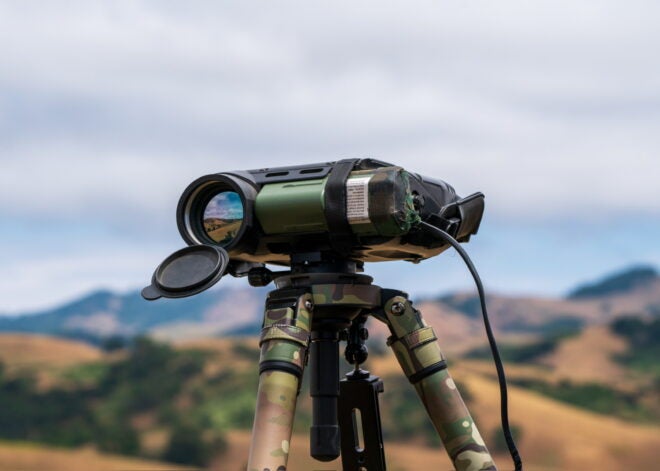Back again? Can’t get enough Friday Night Lights? Have you looked at all of our night vision and thermal-related articles? If not click here to see all the articles I have written. Well, today we take a look at another rare thermal device, a Thales Sophie thermal binocular. It is cooled thermal but what makes it very unique is that this is cooled Long Wave Infrared (LWIR). Most cooled thermal is usually middle wavelength infrared (MWIR).
More Cooled Thermal @TFB
- Friday Night Lights: SAFRAN JIM LR – Cooled Thermal Biocular LRF
- Friday Night Lights: El-Op (Elbit) CORAL-SD MWIR Thermal Spotter
- Friday Night Lights: FLIR See Spot III (AN/PAS-21) Long Range MWIR Thermal
Thales Sophie
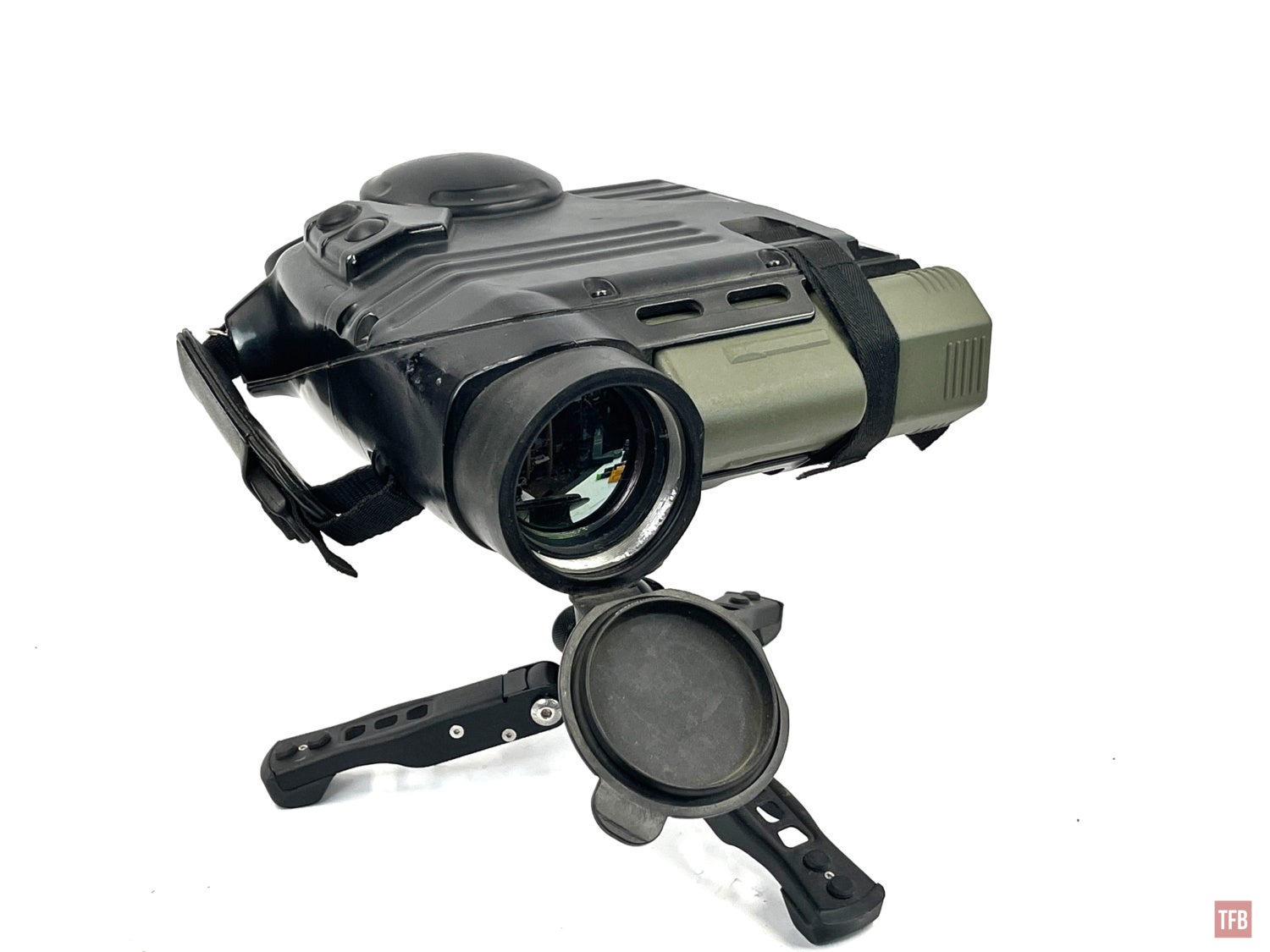
Thales is a French-based defense contractor. They are known for making the LUCIE low-profile night vision goggle. Well, just like Safran/Vectronix and Elbit, they make a long-range thermal binocular called the Sophie. They call it binoculars but just like the JIM LR/LRTV and CORAL-SD, it is a biocular. There is only one thermal sensor producing a thermal image that is duplicated on twin OLED screens, one for each eyepiece.
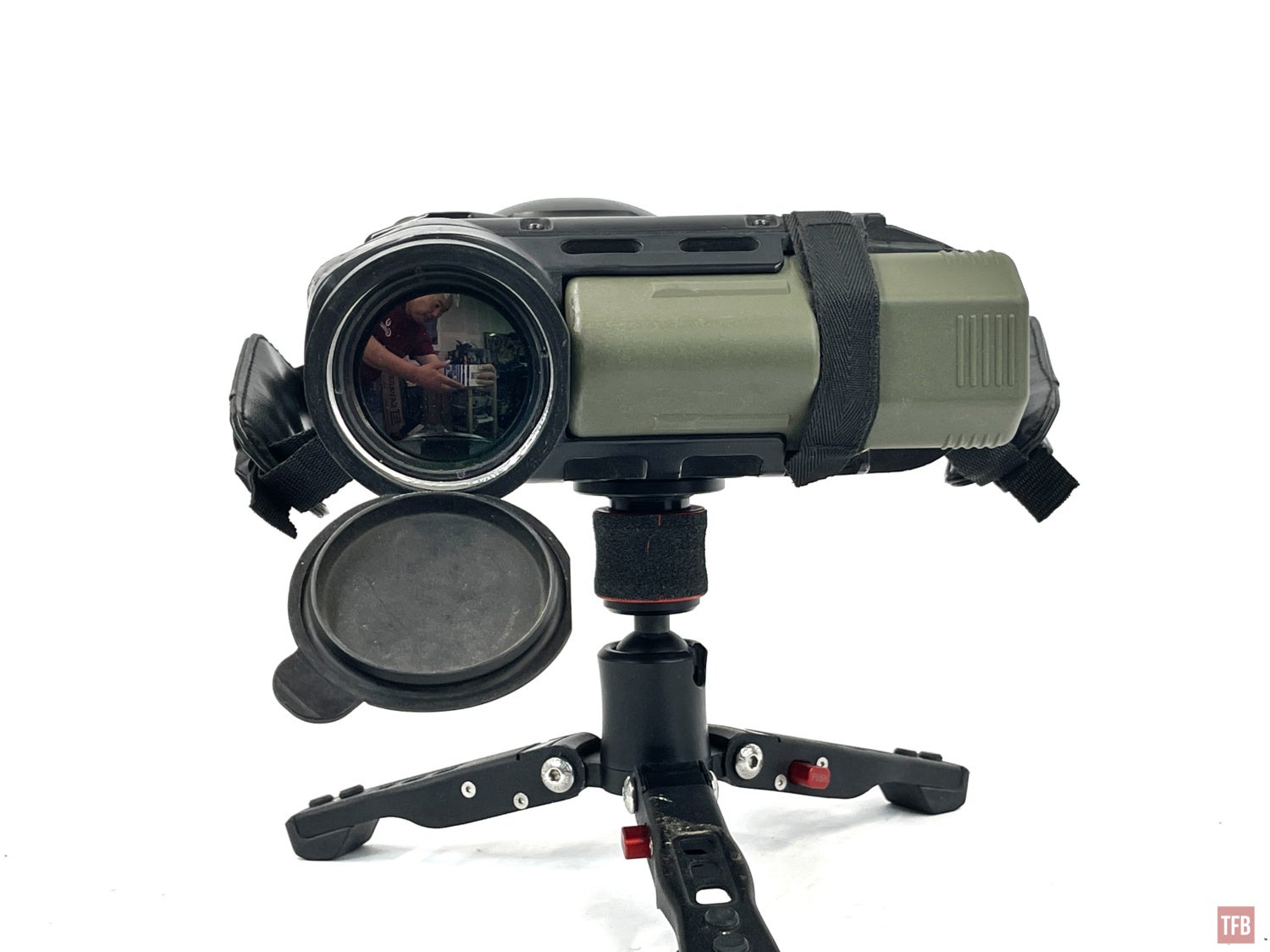
The Sophie has eyecups but unlike the CORAL-SD, they seem glued to the eyepieces. What is frustrating is that when you adjust the diopter in each lens, the eyecup will rotate with the lens. I can’t believe that is how Thales designed this. Perhaps a previous owner glued them on?
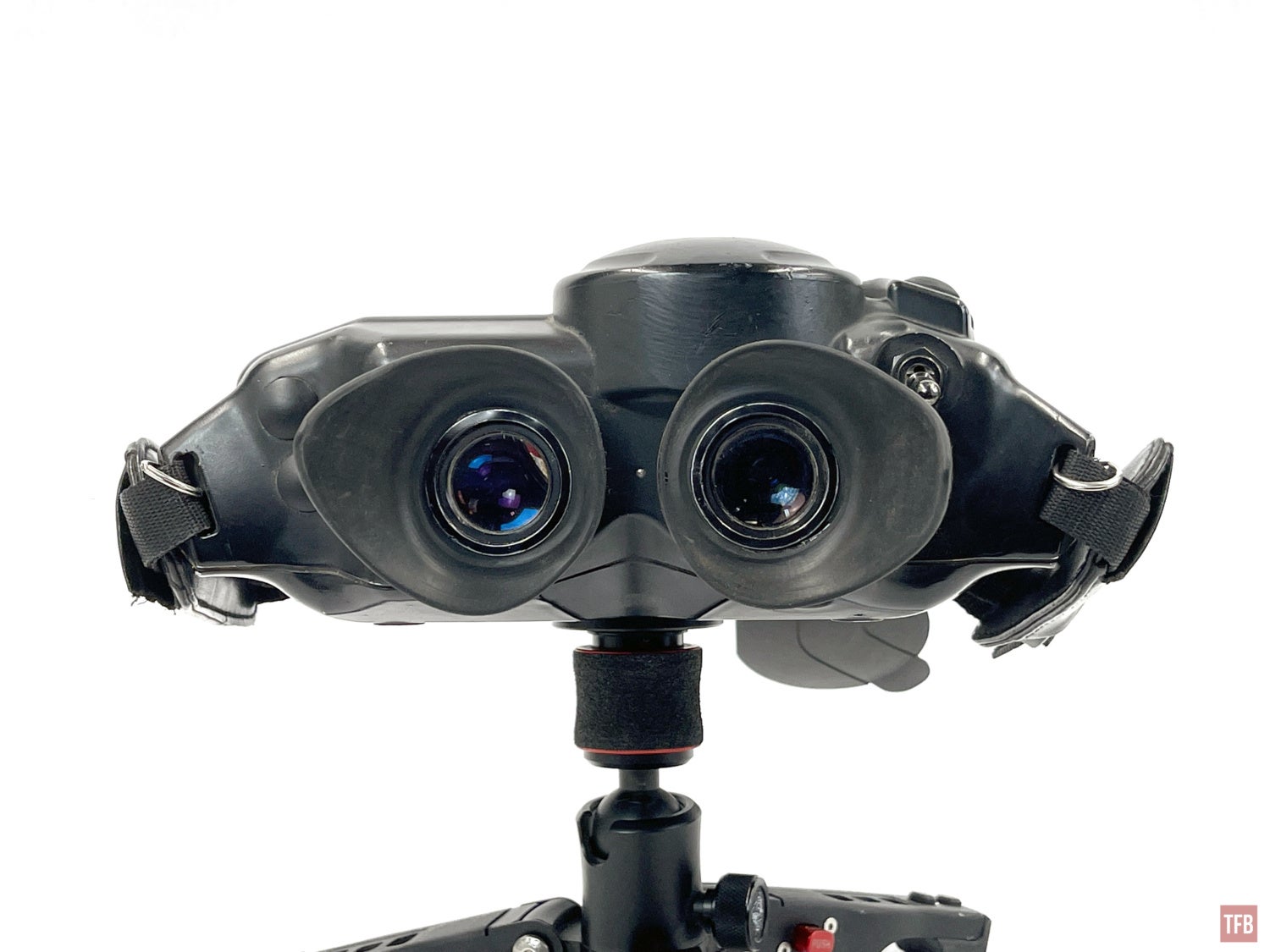
At the top of the Sophie are two buttons. These control zoom. Just like the JIM LR and CORAL-SD, the Sophie has an optical zoom to go from a wide field of view (WFOV) to a narrow field of view (NFOV) as well as digital zoom.

Of all my cooled thermal bioculars, the Thales Sophie is the simplest one. It does not have any GPS, compass, day channel or laser rangefinder. You hold it like a giant pair of binoculars. Your right-hand thumb can press that button below the power switch however it does not seem to do anything on this model of Sophie. The power switch requires you to pull the lever out first then you can flip it up. There are three positions. Down is OFF. The middle position is STANDBY which keeps the Stirling micro cooler running but keeps the OLED displays off. The third position is when the lever is moved all the way up and this is the ON position.
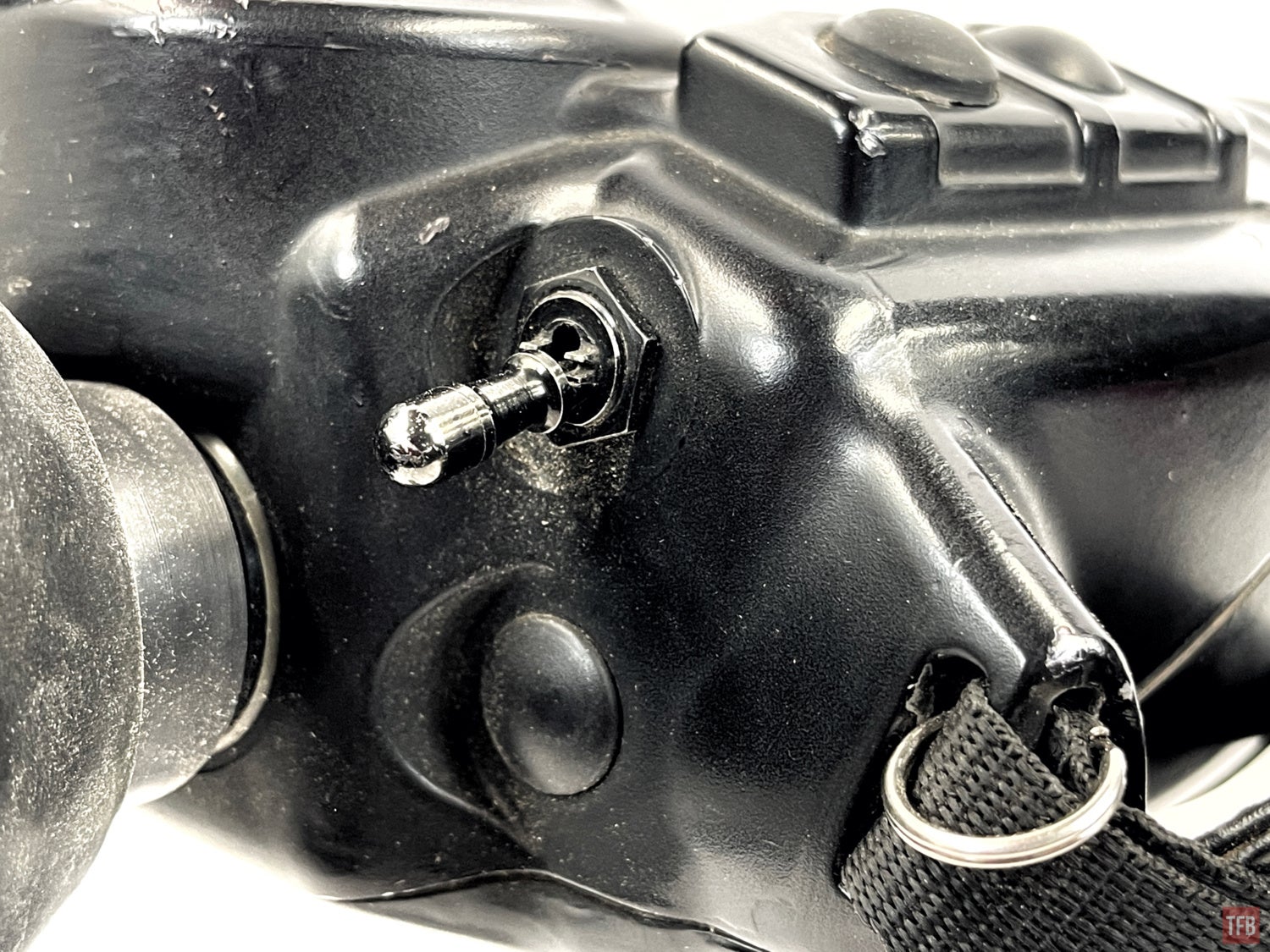
On the left-hand side are two buttons. This accesses the menu and you change settings using the zoom buttons.
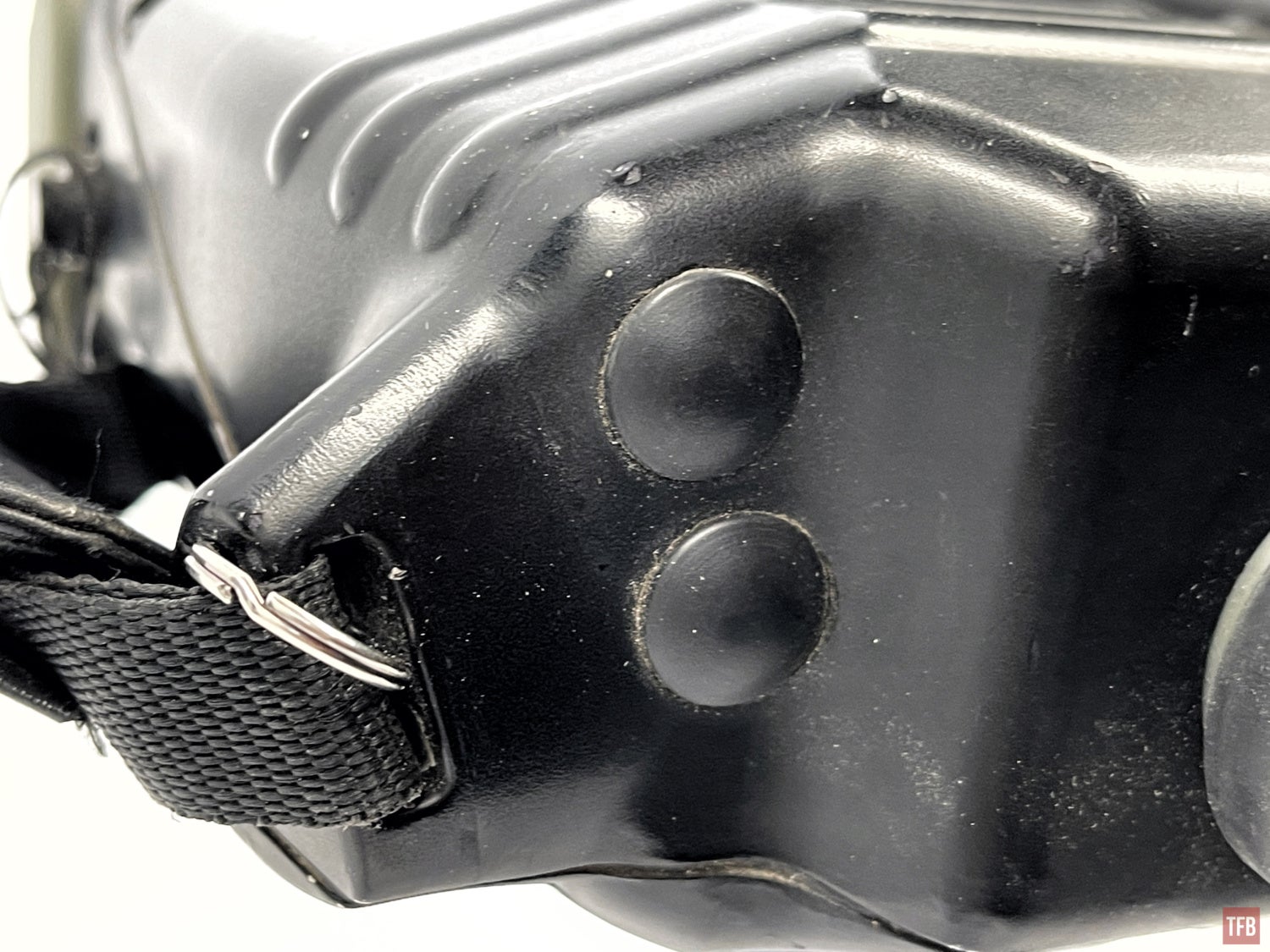
Top Button: Polarity, edge enhancement, brightness, reticle, AZ bore sighting, EL bore sighting, reticle distance units, language, horometer.
Bottom Button: Focus, Gain, FOV (zoom)
Polarity is simply white or black hot. I did not notice any difference when I turned the edge enhancement off or on. I will get to the reticles soon. The azimuth and elevation are for zeroing to some laser designator. Language options are French and English. The horometer is how long the unit has been running since it was made. Below are the three different reticles – cross, distance and micrometer. The distance one, I assume, is a stadiametric rangefinder reticle.


The Distance reticle has 14 options but the distances seem odd numbers. Maybe this is due to the low resolution and limited by the pixels of the image?
- Front: 506m Side: 1012m
- Front: 539m Side: 1078m
- Front: 578m Side: 1156m
- Front: 622m Side: 1244m
- Front: 678m Side: 1348m
- Front: 736m Side: 1472m
- Front: 809m Side: 1618m
- Front: 899m Side: 1798m
- Front: 1012m Side: 2024m
- Front: 1156m Side: 2312m
- Front: 1349m Side: 2698m
- Front: 1619m Side: 3238m
- Front: 2025m Side: 4050m
- Front: 2699m Side: 5398m
- Front: 4050m Side: 8100m
This is the menu option for reticle distance units. As you switch the distance, the two reticle bars move closer together as the distance increases.

The Sophie has a proprietary battery that uses battery chemistry that is very uncommon, Lithium Manganese Dioxide. Not sure why Thales chose this battery chemistry over Li-Ion.
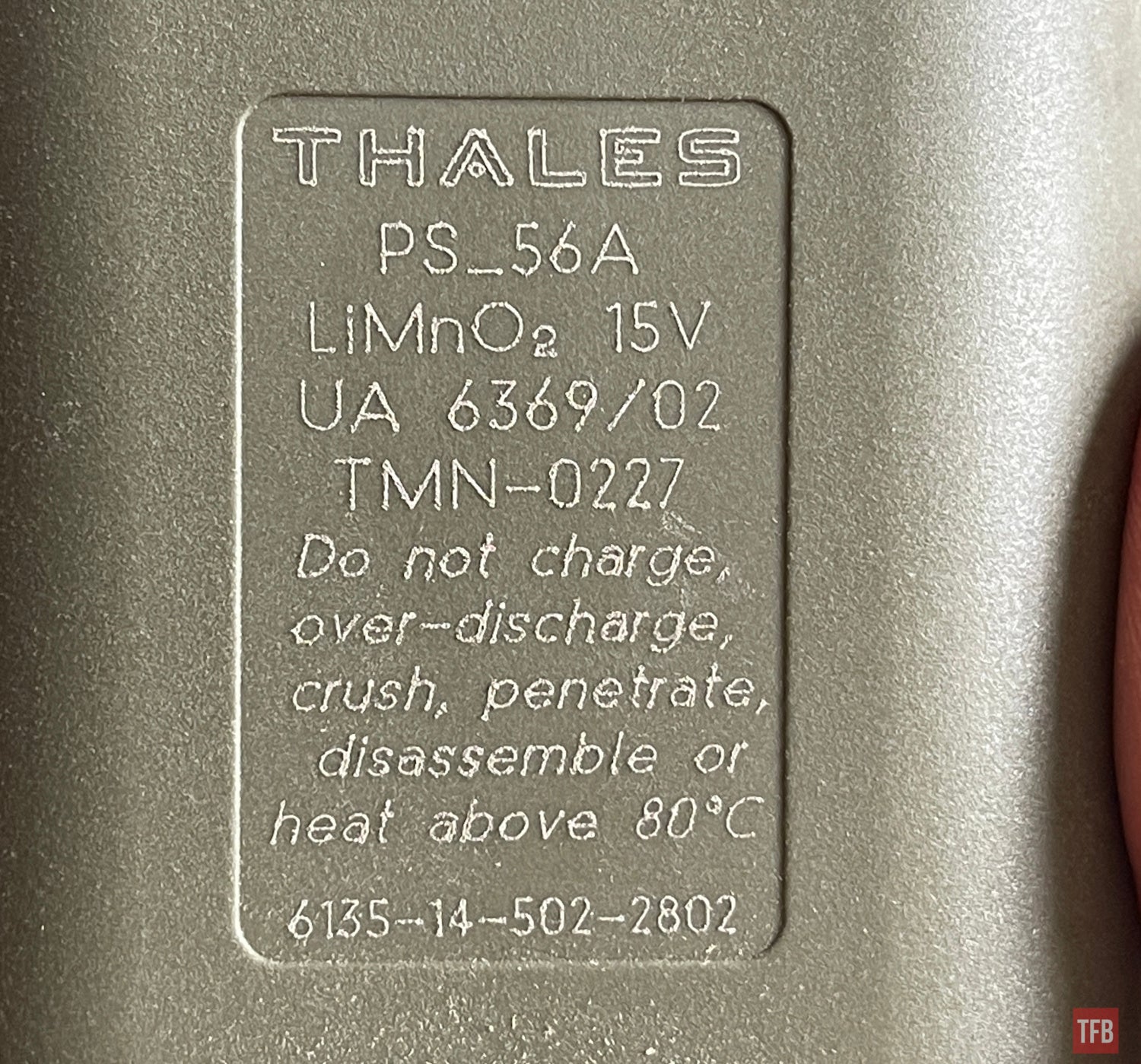
The person I bought this from did not have a charger for the factory batteries even though he had three batteries, one is brand new and still sealed in the packaging. So he gutted one of the batteries and made an adapter using an RC Li-Po battery cable. You can see the original battery housing below with a battery cable coming out of it.

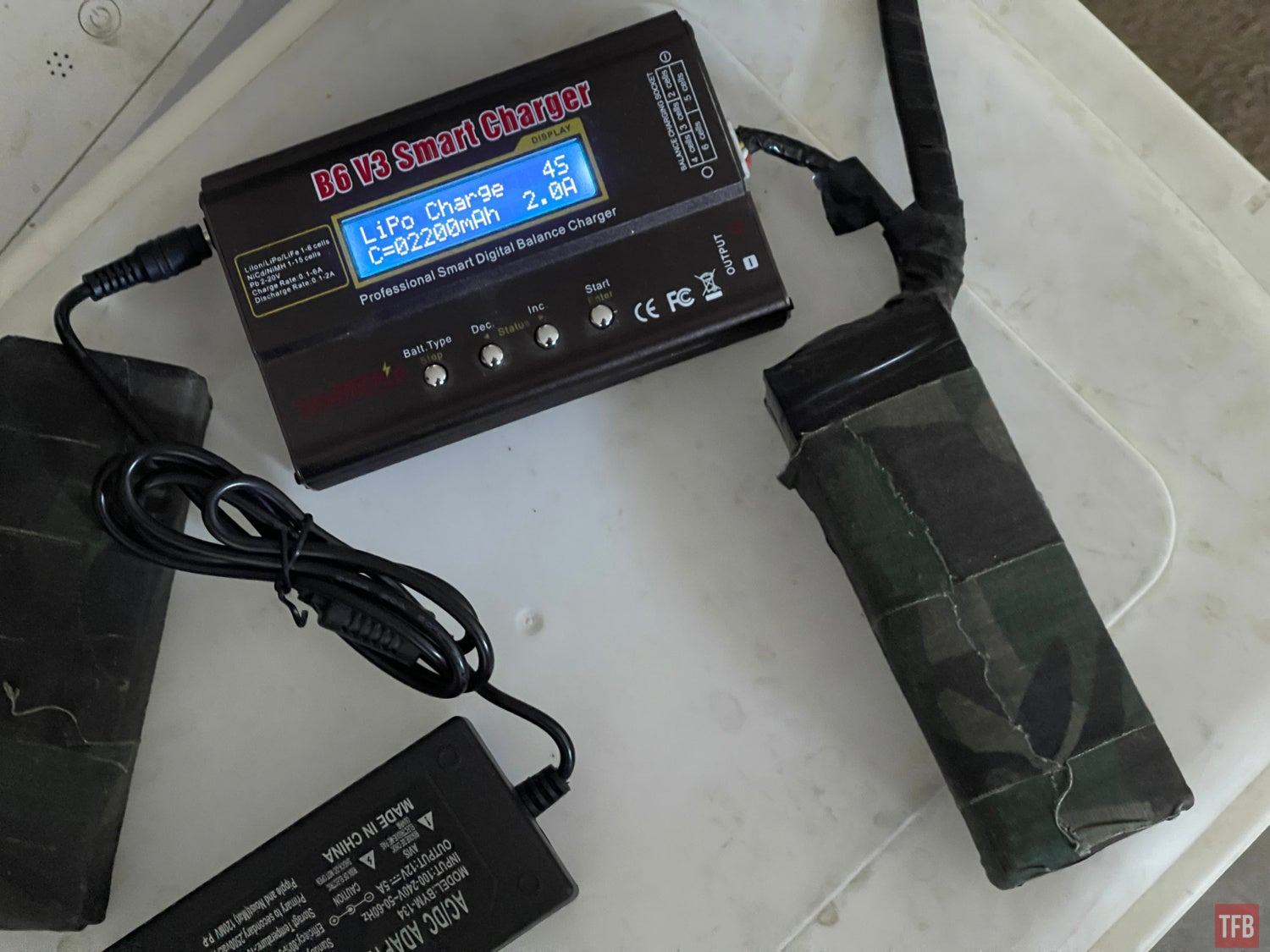
The Sophie came with two of these camo-wrapped batteries seen above, but one of them was too low to charge. So I went to my local RC car shop and bought this higher-capacity battery.

Nocorium was kind enough to make me a wrap for it.
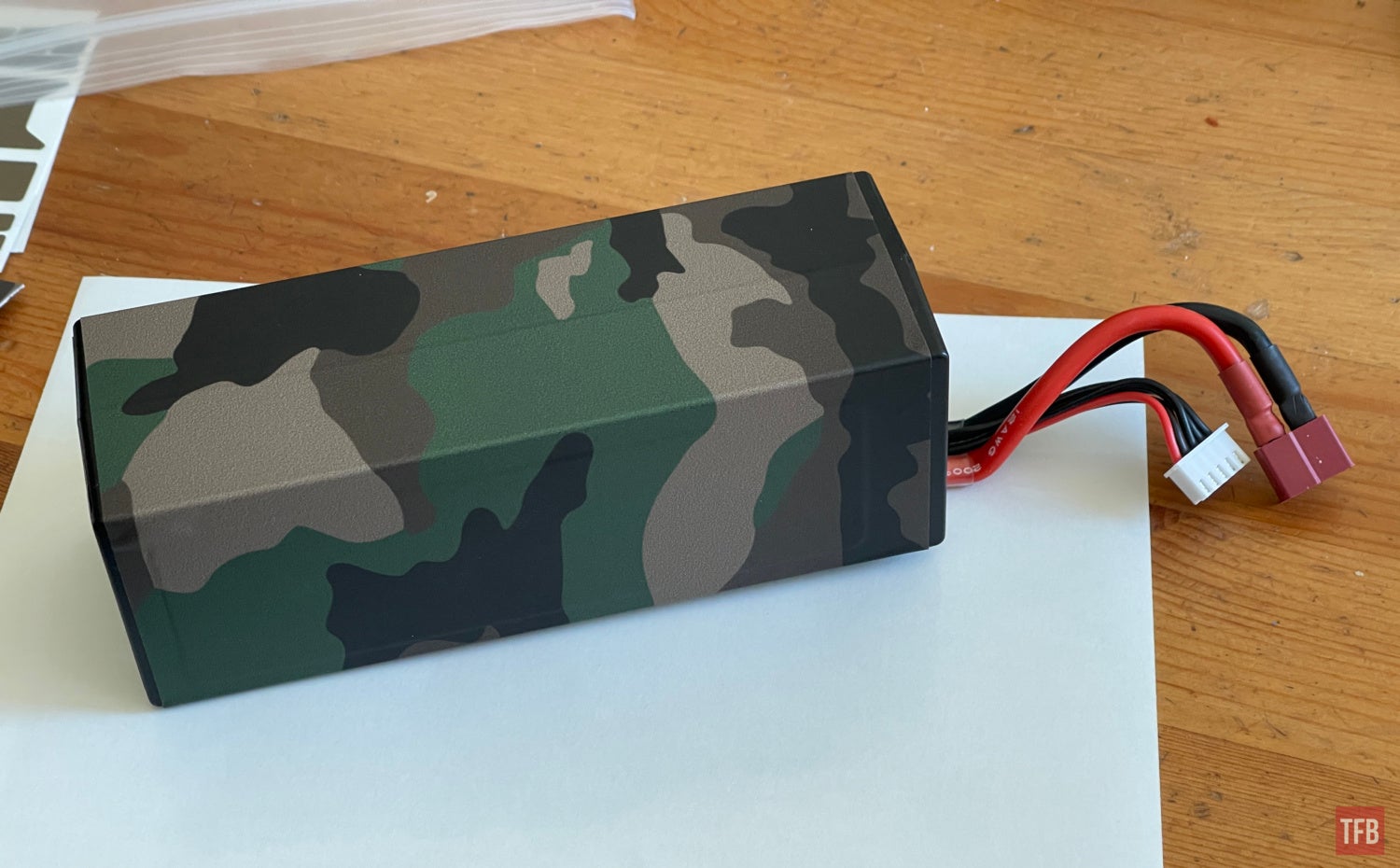
This is the same battery I used for my FLIR See Spot III, but it was originally bought for the Sophie.
Sophie Carrying Case
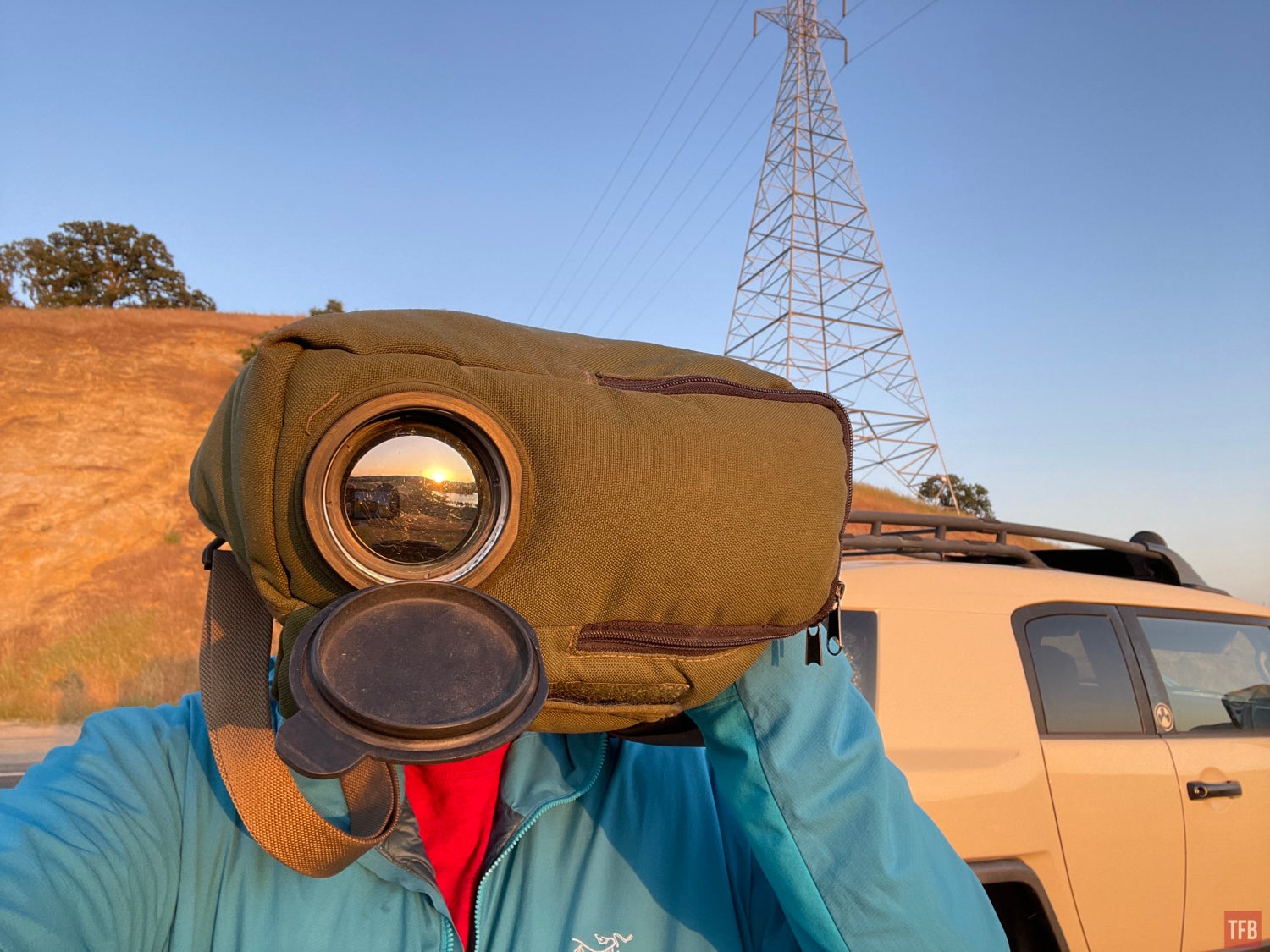
The Sophie thermal biocular came with a padded carrying case. It is sort of like a padded jacket. You can keep the Sophie inside and there are slots on either side for your hands to reach up inside and manipulate the controls. As you can see, it has a hole so the objective lens can stick out the side.
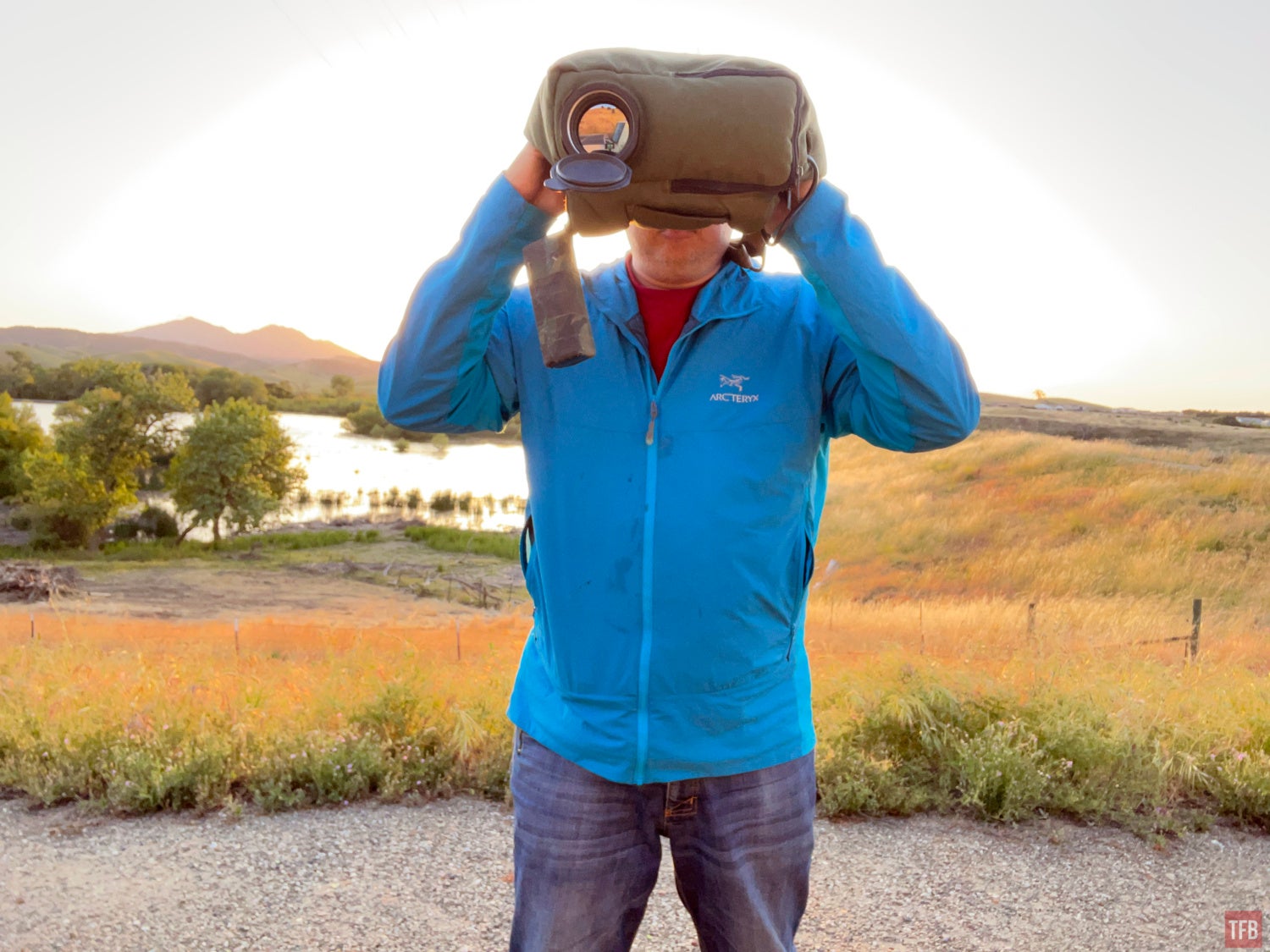


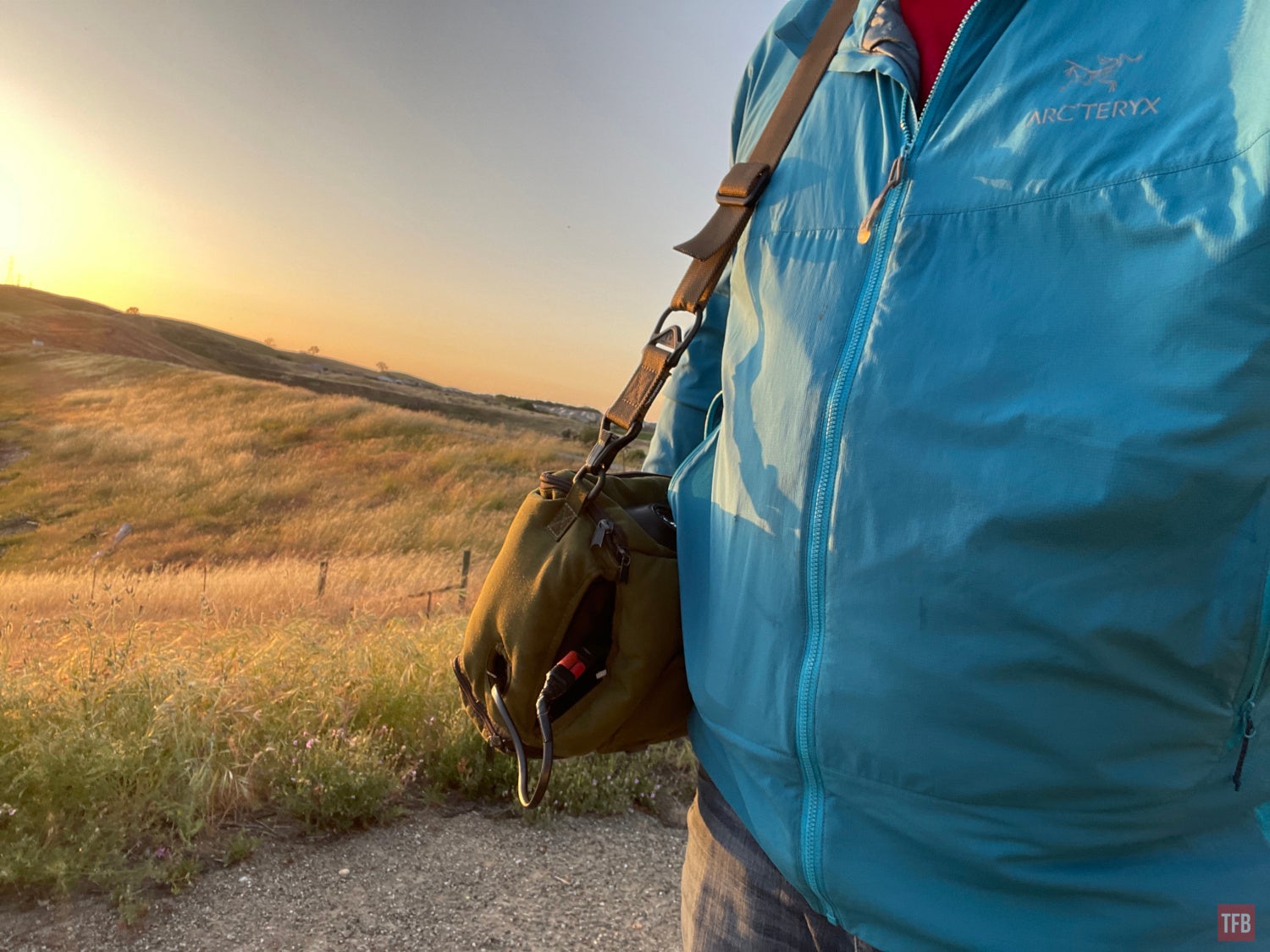
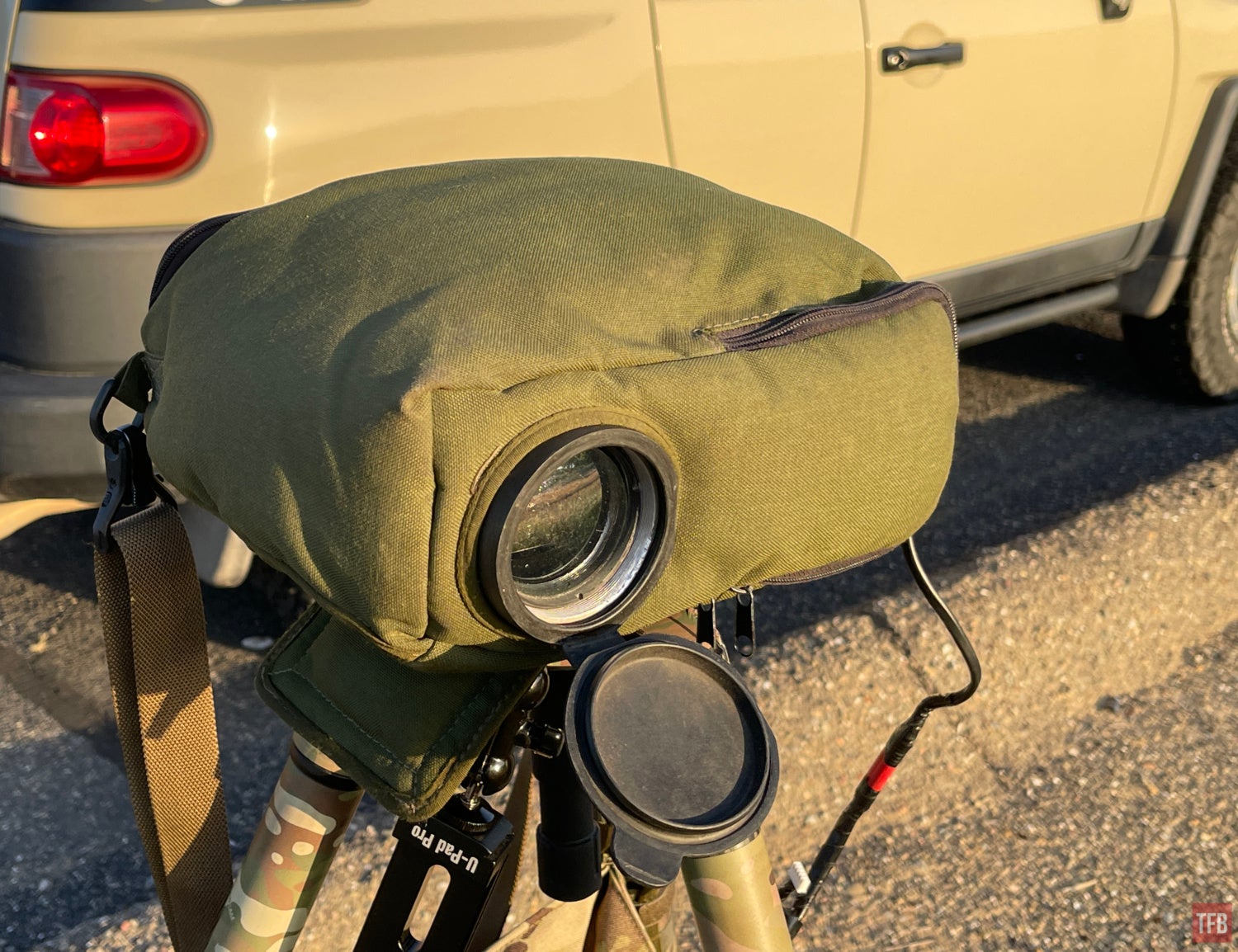
At the rear are cutouts for the eyepieces and power switch.
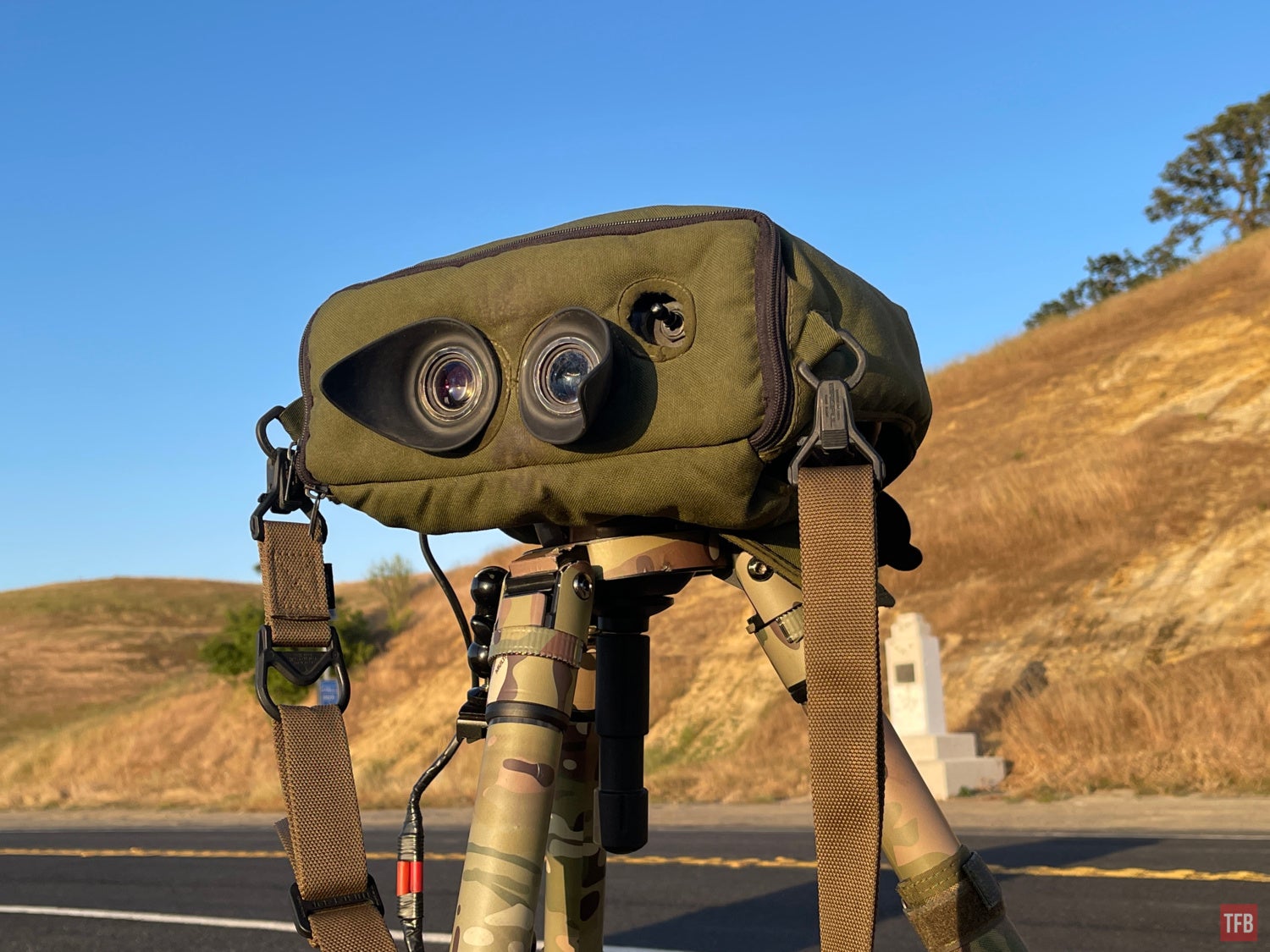
At the front is a zippered flap to access the battery. And to the side is a pass-through hole for what I assume is for power adapters and data cable. There is a port on that side of the Sophie but I do not have any cables for it.
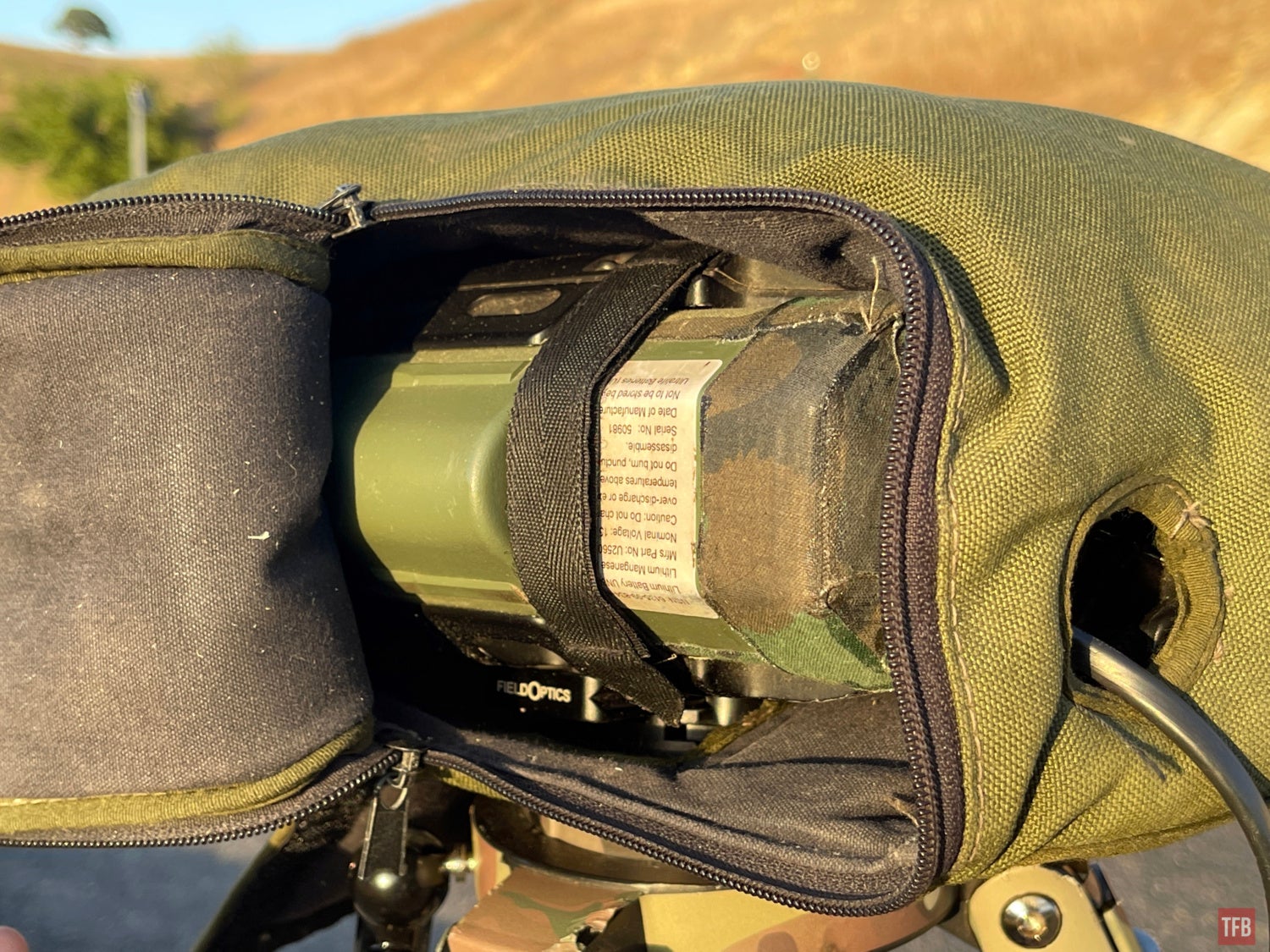
How Does The Sophie Look?
The image is ok, it is not as good as the JIM LR. On paper, it sounds decent but I am not sure if this is for a newer version of the Sophie.
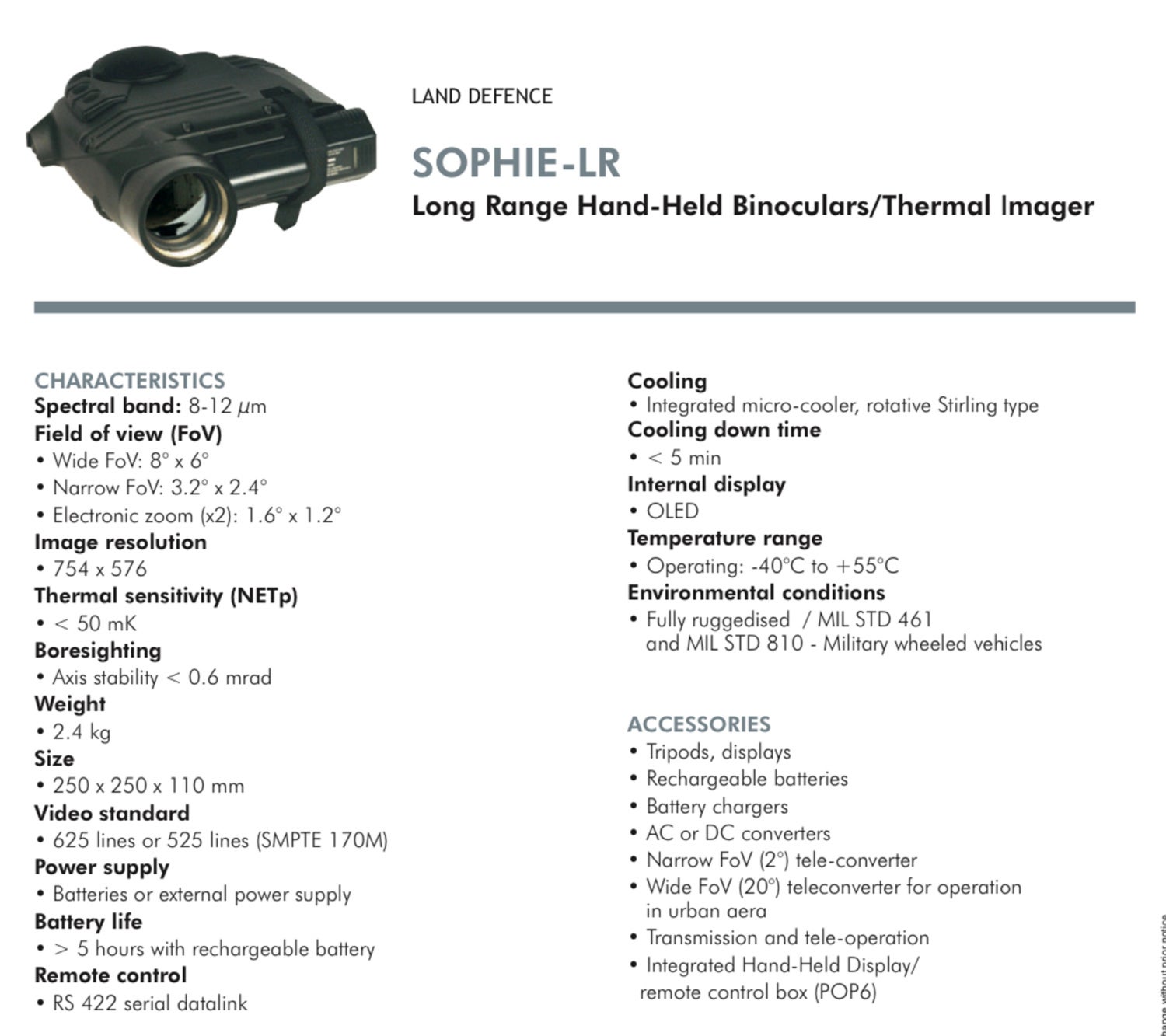
If you notice, it is LWIR since its spectral band is 8-12 μm whereas MWIR is around 4-5 μm.
According to this data sheet I found online, it claims to have some very impressive capabilities. However, I have not really found these to be accurate to the one I have.
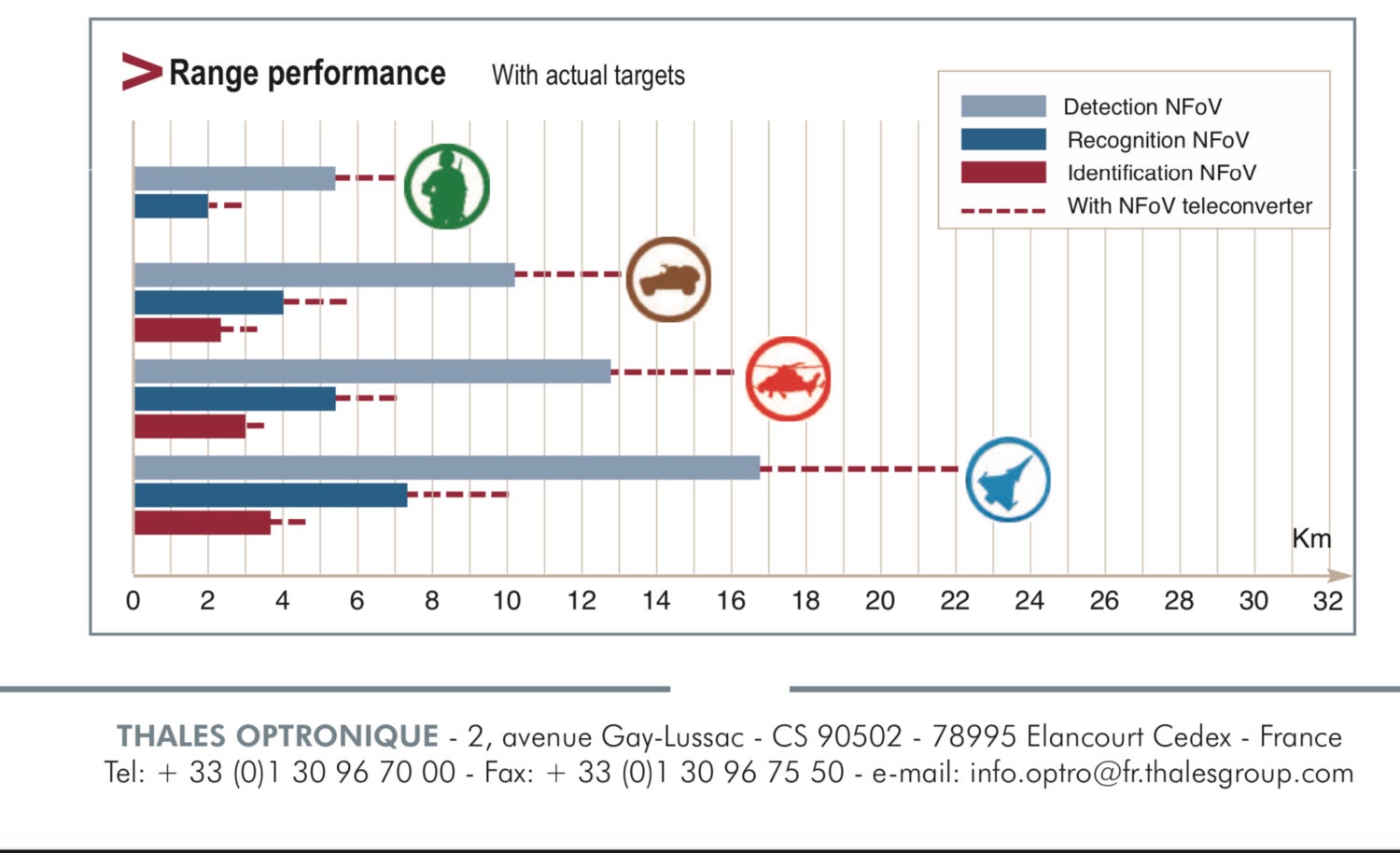
Here is my usual target for testing optics. That shed is 530 yards away. These images look worse than it really does since I am photographing through the eyepiece. I wish I had the video out cable so I could record the analog image digitally.
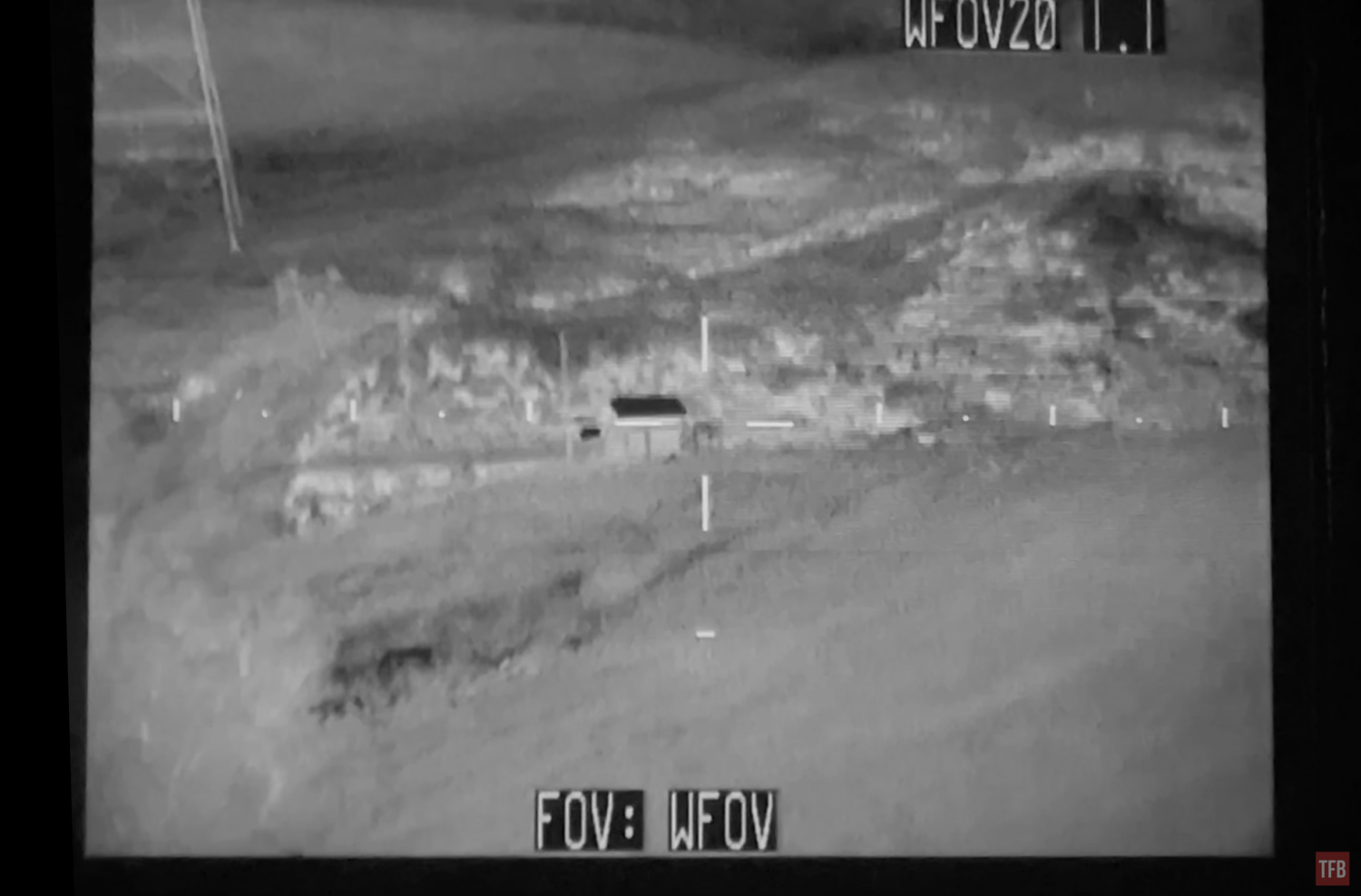
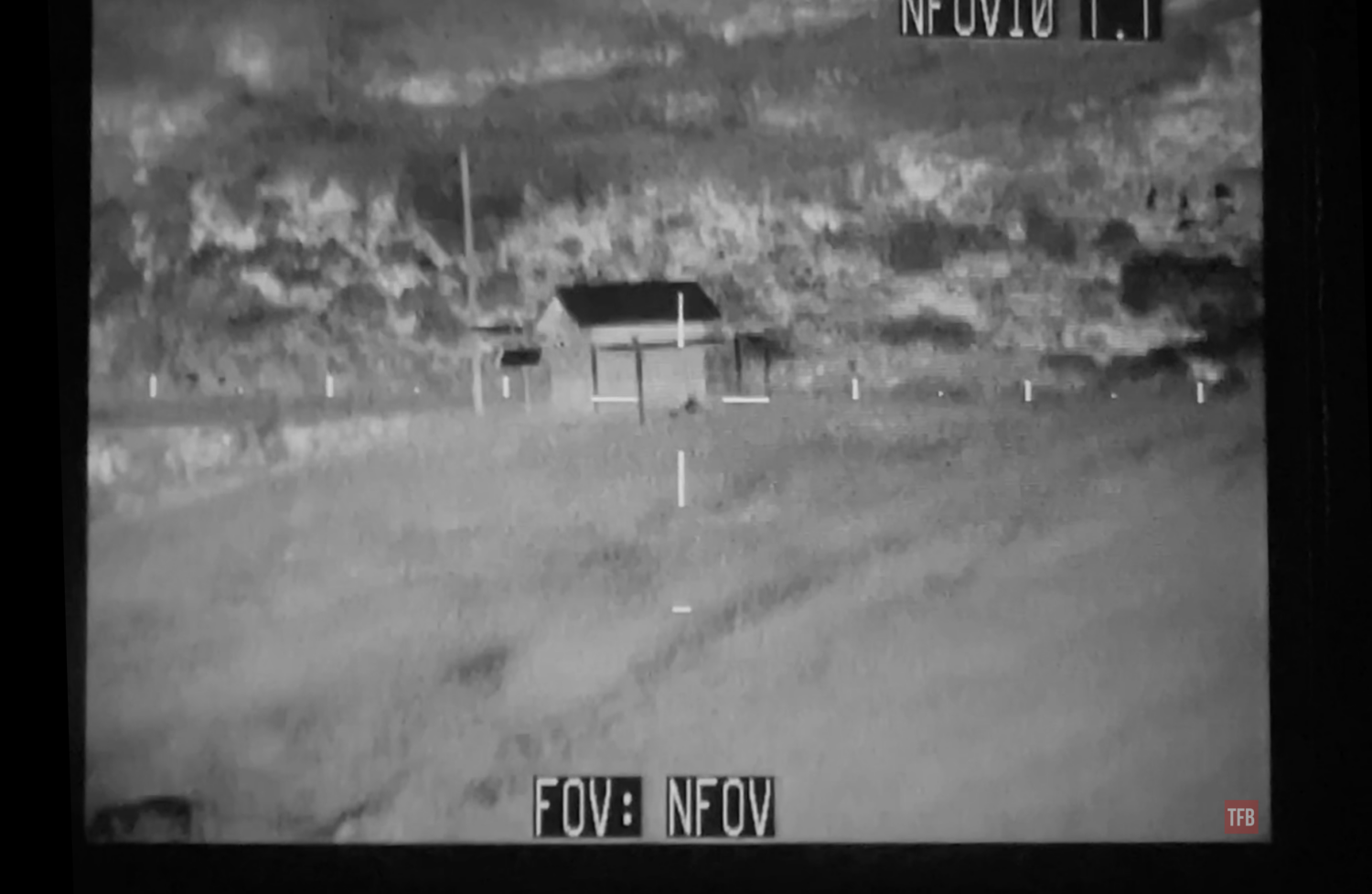
Digital zoom is not too bad and that is without any magnifier.
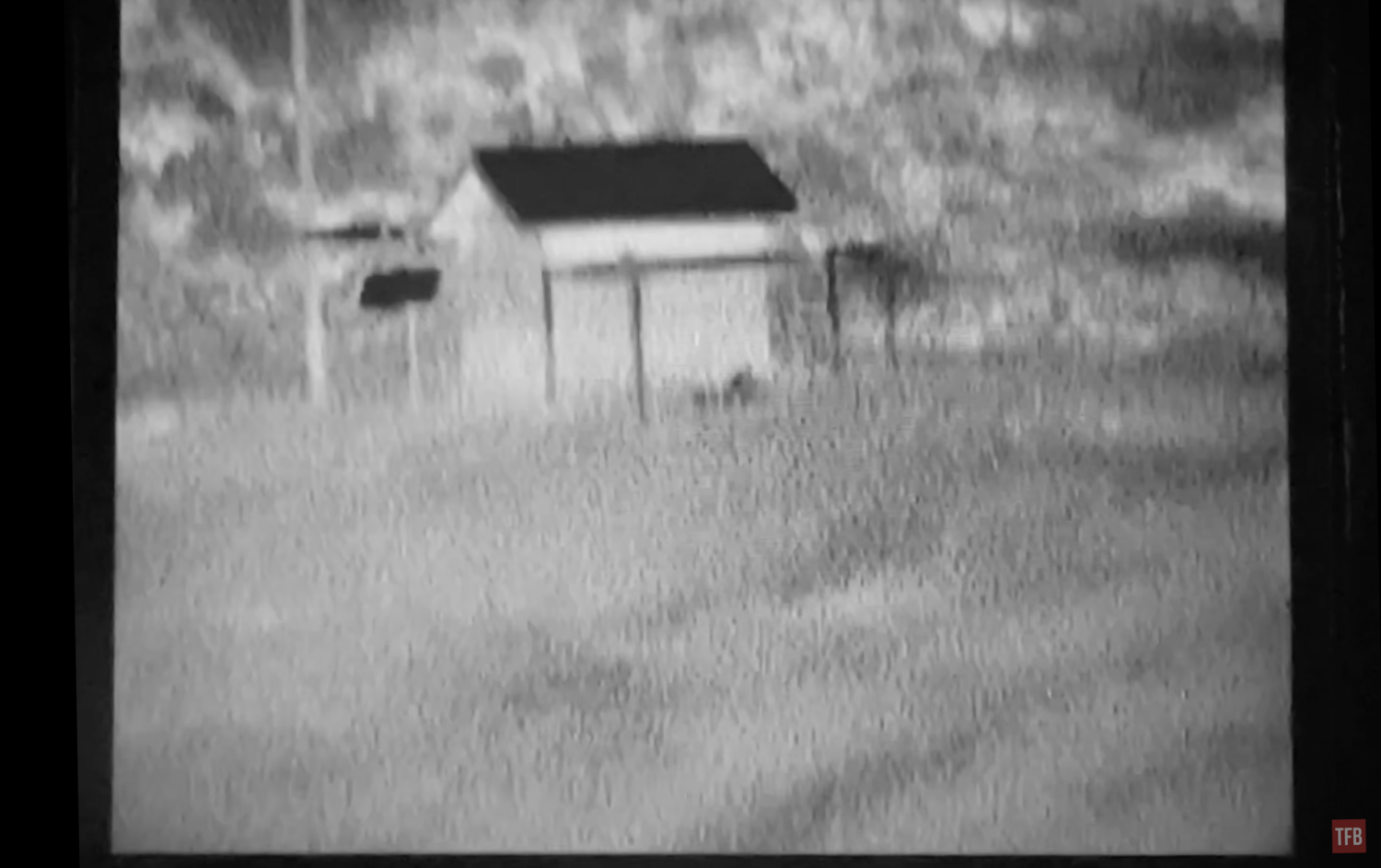
When I was testing it, I saw something moving just over 1k yards away. By its behavior, I thought it was a coyote. I confirmed it with my 16x binoculars and it was a pet dog. Identification would require I was closer but recognition at 1k yards is not bad at all.
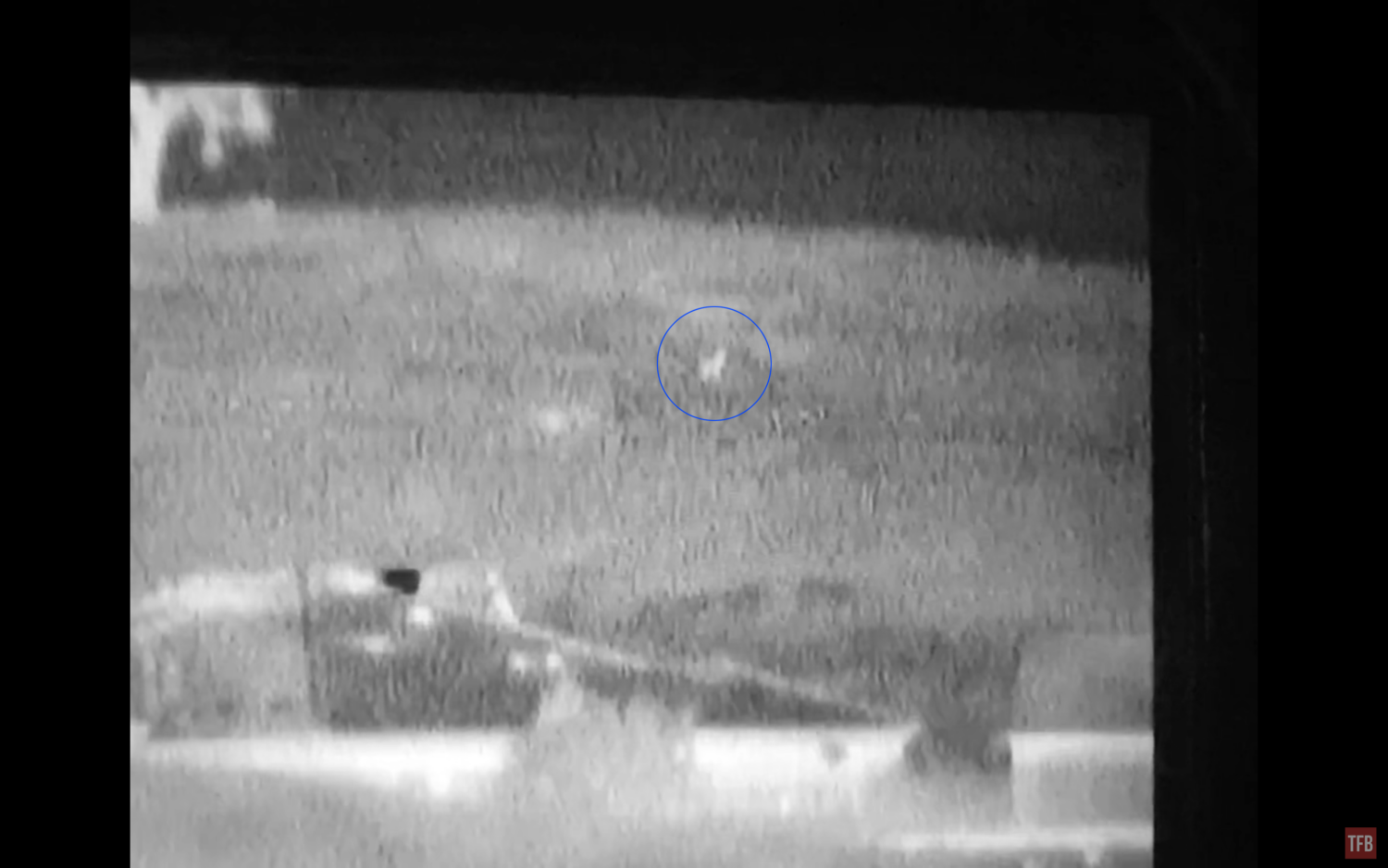

Photo by Vic M.
One thing I was hoping for with Sophie is if the sensitivity would be higher since it is cooled. My experience with cooled thermal is with MWIR systems and they are so sensitive they can see the heat coming off bullets as they fly through the air. No, I am not talking about tracers. Just normal bullets. Sadly Sophie does not show bullet heat the same as my cooled MWIR devices. Here is a comparison video where I recorded the video from my FLIR SeeSpot III while my friend Kythe shot 5.56 out to 475 yards. Then a video clip looking through the Sophie. You can sort of see a brief frame of heat that could be the bullet but it quickly disappears.
Here is a video where I try to observe one of my thermal beacons, the Steiner
Final Thoughts On The Thales Sophie
I had high expectations for a cooled LWIR thermal device but so far I have not seen or tested a good example where it was more sensitive than an uncooled LWIR thermal. I suppose it did show that 5.56 bullet ever so briefly but that is not useful compared to what my cooled MWIR thermal devices can show even for being low-resolution systems. Size-wise, it is wider than any other thermal device I have and the features are not as extensive as others. It does not have a designating laser like the other ones pictured below.

L-R: BAE UTBx, PAS-28 MRTB, Thales Sophie, SAFRAN JIM LR.
The distance reticle seems odd to me. It is only a single pair of vertical bars that you have to manually set the distance apart. Anything that does not fit perfectly between those two bars you cannot range it. This does not seem very useful to me. Also, the distances are all random numbers. They are not even numbers. The reticle does expand as you zoom in.
There is a considerable amount of jelly roll in the OLED screens that I can see with my naked eye without even trying. You can see it in the videos I embedded above.
I would like to find a video out cable for this one day but so far I have not been able to track one down. I did not pay much for this but I think it is worth a lot more. I have not been able to find a retail price since Thales does not list prices and always says “contact for quote”. Not sure why pricing is so secretive?
Thank you for reading all the way to the end. See you next Friday.
 Your Privacy Choices
Your Privacy Choices
